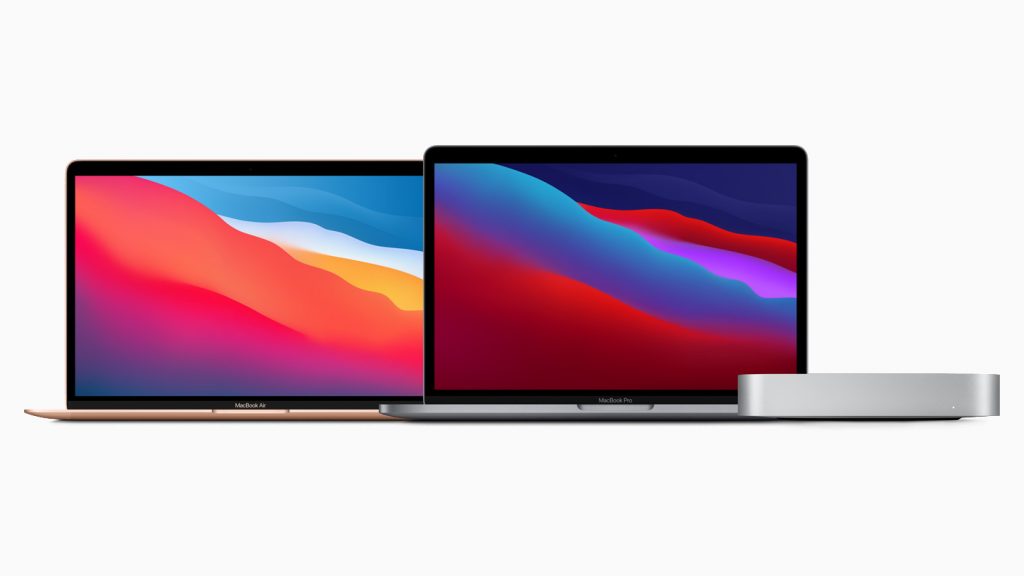Words by Lewis Empson, image courtesy of Apple
In November of last year, Apple debuted their highly anticipated, in-house designed computing chips for their Mac range. These chips had seen great speculation before their actual announcement and hit the industry with force. Since their release, they have been subject to critical acclaim, being lauded for how they mostly live up to the hype as well as how the transition to the ARM platform that they are based on was practically seamless. Since then, we have seen more devices equipped with these chips, most recently and notably is the colourful rebooted iMac, and the first iPad to be equipped with these processors. So what makes these chips so special? And how are Apple using them to reinvent their approach to the industry?
The new M1 chip is a first generation processor designed in-house by Apple, much like their mobile A-series chips used in their iPhones and iPads. It uses an ARM architecture which differentiates from their previous processor partners at Intel as the ARM platform is much more open and versatile; Apple’s main competitor Microsoft have been experimenting with ARM based processors for some time with their most recent Surface Pro X device somewhat dividing fans due to compatibility and performance issues. Apple, however, have taken their time to develop an incredibly stable first generation processor and a software platform called Rosetta, which instantly translates Intel based applications to work natively on your machine – it’s seriously impressive.
This has resulted in one of the most impressive feats of computer engineering as their processor is wildly powerful and ready to be quickly integrated into professional workspaces due to mostly seamless app integration and compatibility. Apple have also moved swiftly to standardise this powerful chip across the board, starting with their entry level MacBook Air, Mac Mini and MacBook Pro and now have upgraded the iPad Pro as well as introducing a completely redesigned (and colourful) iMac. 

So, whereas Intel offers many different chips of varying power and portability options (depending on manufacturer), Apple has created a standardised suite of devices with the same chip throughout. In turn this has made buying a Mac easier than ever – in before the incoming “just buy a PC” instead.
Instead of having to buy the device that was in your price range and sacrificing on computing power, or buying the device that had the power you need but missing out on portability, you can now buy the device that best suits your lifestyle, budget and needs, all whilst ensuring you get a fast and capable machine. If you need power and portability you can get an iPad Pro, or if you need an all in one solution then go for an iMac. And then if you need something in between the MacBooks or Mac Minis are there; either way you will get standardised internals (some RAM options are different but that isn’t the be all and end all). This is a tactical maneuver by Apple to get people in the door who may have not owned or considered a Mac computer before.┬á
Theoretically this can also sound limiting, being stuck with a single processor option regardless if it fulfils your needs or not, but thanks to the fact that M1 is such a powerhouse in performance, Apple has managed to sidestep these issues almost completely. Sure, there are more capable laptops out there, but the fact that the base model, sub-┬ú1000, fanless MacBook Air is now considered to be not only a genuine option for people in the photo and video editing industry, but these M1 computers have been labelled by some as a “must have” with the potential to leave its rivals in the dust.
Only time will tell if Apple can keep this up; either way it’s an incredibly strong start for the tech giant and holds an exciting prospect for their future devices. Intel is standing firm, remaining that they have and always will be the processor top dogs, but maybe they should keep their eye on M1ÔǪ I know that I will be.
Instagram: @quenchdownload
Write for us: email – technology@quenchmag.co.uk or join the Facebook contributor group
Check out our other articles here


